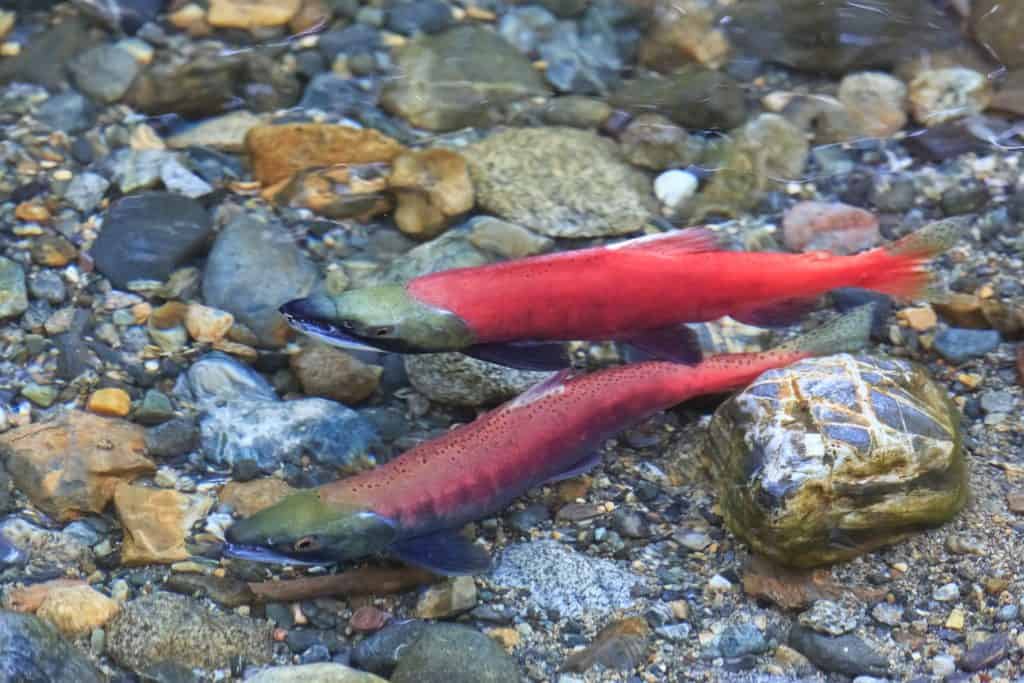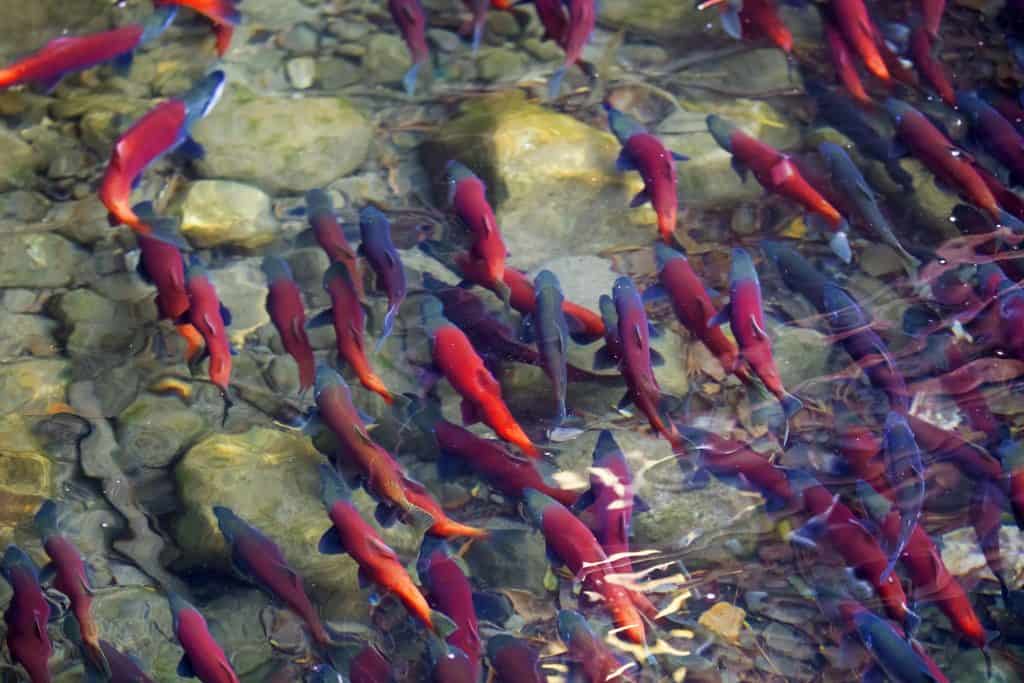
As I have been learning about more fish, the kokanee has become an interest of mine. When I learned that they die after spawning, I wanted to know why so, I did some research.
Why
Kokanee
What Are Kokanee?
Kokanee
Kokanee can range in weight between three to five pounds. However, because they are usually quite young, it is more likely that you will only find one pound fish. Kokanee
Kokanee is also extremely picky about the temperature of their water. If you are a fisherman trying to catch them you can easily track down the temperature that they like. They will typically be found in natural water lakes and streams. Kokanee oftentimes travels in school so when you come across one chance are if you hurry and cast again you’ll most likely catch another.
Young kokanee undergo a big change before spawning. Typically in their fourth year, kokanee change from
Not only do the kokanee change color but their entire body will change. They will go from a regular small fish to all of a sudden having hooked jaws and the males will grow teeth.
This color change and life cycle is part of being a semelparous fish. The opposite of semelparous is iteroparous. An example of an iteroparous fish would be the steelhead. These fish do not die after spawning; in
It may seem sad that kokanee
Kokanee are a great fish to catch for sport. They are extremely agressive and will do anything to get off the hook. If you are trying to catch one make sure you have a good drag on your pull or else, they are sure to tear apart your pole.
When kokanee
Once the kokanee return to their stream, they will spawn in pairs between the months of November and December. The eggs are laid in what are called redds. These hatch in about 110 degrees. However, these newborn fish will never meet their parents because after spawning the kokanee will quickly die off.
Habitat

When kokanee are born, they are born in streams. However, they will migrate up the stream to a natural water lake. This is where they will stay for the main part of their lives. Once they are matured and ready to spawn they will return down the stream and lay their eggs.
Male kokanee
Female kokanee
Females don’t just attack other females. They will occasionally attack a subordinate male as well. Even though both sexes are aggressive, female kokanee will only attack a couple times before the intruder runs off. Once the intruder is gone, the female will return back to her redd and watch over her eggs while waiting to die.
While some may not think much of the importance of competition and the attacks between the two sexes, it is what entitles the female to a good
Not only do both sexes fight after spawning, there is also a lot of fighting to determine who their mate will be for the spawn. The spawning success really is determined and varied more by the male than the female.
Males need to attract a female by showing that he is large in size. The large (and sometimes ugly) teeth of the male also play a big role in what attracts the female to become the mate. The role of the female is to somehow prove to the male that she will be able to lay and protect a great
Not only does the female have to prove herself to the male, but the female’s spawning cannot be considered a success if little to none of her eggs survive. A big reason why the genders will fight and become so
How to Catch Kokanee
To catch a kokanee, you may want to purchase a good sonar or radar to attach to your boat. Just because they are somewhere in the lake one day doesn’t always mean they will be there again the next day. These are fish that travel in schools, the key word being travel. They are not very likely to stay in one place for very long.
In the past, it was recommended that fishermen buy heavy gear to catch the kokanee. However, as more fishing products are invented and more innovations of lighter materials are being made, the earlier heavy materials are quickly becoming a thing of the past. Now, if you want to catch
Interestingly enough, when you go to buy lures to catch kokanee the goal is to find one that will make the kokanee angry. Since kokanee
A good
Related Questions:
Do salmon die shortly after spawning? Salmon stop eating when they return to the fresh water. Since they stop eating after spawning, they don’t have enough energy to make another journey. This, plus the biological strain of migration and spawning, leads to their death.
How long after spawning do salmon die? It does not take very long for the salmon to die after spawning. This is caused by their lack of nutrition and decaying of their nutrients. It may take anywhere from a few days to a few weeks for salmon to die.
Which salmon do not die after spawning? Unlike the Pacific Ocean salmon, the Atlantic Ocean salmon do not die after spawning. In fact, adult salmon can actually produce for many years allowing for greater proliferation of that specific type.
